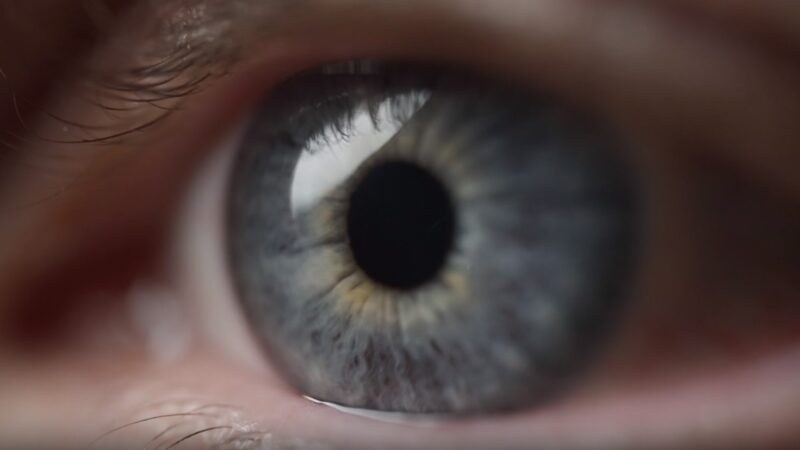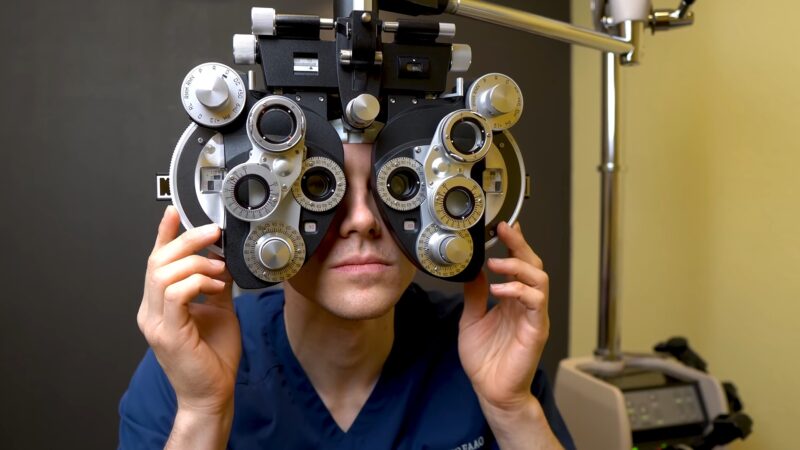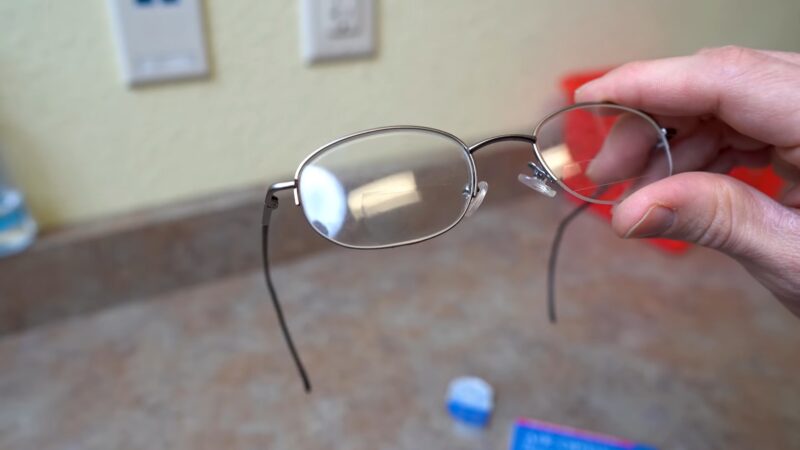Retinal disparity is a fundamental concept in understanding how we perceive depth and distance. This phenomenon lies at the heart of binocular vision, allowing us to see the world in three dimensions. It occurs because our eyes are spaced apart, meaning each eye captures a slightly different image.
The brain then interprets these differences, enabling us to perceive depth. This introductory exploration into retinal disparity will delve into its principles, importance in vision and perception, and applications in various fields. Today, we want to discuss retinal disparity in greater detail.
Basic Principles of Binocular Vision

The basic principles of binocular vision are essential for understanding retinal disparity. Binocular vision refers to the ability of our two eyes to work together, creating a single, cohesive image. Each eye views the world from a slightly different angle, producing images with minor disparities.
These discrepancies are what the brain uses to gauge depth and distance, a process central to binocular vision. The convergence of these two slightly different images allows us to perceive the world in three dimensions, a key aspect of human vision.
| Basic Principle | Description |
|---|---|
| Convergence | The inward movement of the eyes when focusing on a close object is essential for depth perception. |
| Stereopsis | The brain’s ability to combine the two slightly different images from each eye into a single, 3D image. |
| Parallax | The apparent shift in an object’s position as viewed from different angles aids in depth perception. |
| Field of View Overlap | The area is viewed by both eyes simultaneously, providing a sense of depth and spatial awareness. |
| Depth Cues | Visual information and cues that allow the brain to perceive depth, such as shadows and object sizes. |
Defining Retinal Disparity
Retinal disparity is defined as the difference in the visual images that each eye perceives because of the eyes’ horizontal separation. The brain uses these disparities to construct a three-dimensional understanding of a scene.
When objects are closer, the disparity between the images is greater; conversely, distant objects have less retinal disparity. This difference is crucial for depth perception and is a key component of binocular vision.
Essentially, this is a byproduct of our binocular vision system, with each eye sending different images to the brain. The brain then processes these differences, allowing us to perceive depth, a process that is automatic and crucial for spatial understanding and interaction.
What Does the Science Say?
The science behind retinal disparity involves complex interactions between the eyes and the brain. In binocular vision, each eye captures its own image, but due to the eyes’ slightly different positions, these images are not identical. The disparity between these images is what the brain uses to interpret depth.
The process begins with the eyes capturing two distinct images, which are then transmitted to the brain. The brain’s visual cortex processes these images, reconciling the differences to create a perception of depth.
This processing is instantaneous and automatic, demonstrating the efficiency of the human visual system. Retinal disparity is a remarkable example of how our bodies and brains work in tandem to interpret the world around us.
The Physiological Process

Retinal disparity is deeply rooted in the physiological processes of our visual system. This process begins with the eyes capturing two slightly different images due to their physical separation on our faces. Each eye’s perspective is unique, creating a pair of images that are similar but not identical.
- Transmission to the Brain: The images captured by each eye are transmitted along the optic nerve to the visual cortex in the brain. This journey involves complex neural pathways that are fine-tuned to handle visual information efficiently.
- Integration of Images: Upon reaching the visual cortex, the brain performs an intricate task of integrating these two images. This integration process, known as stereopsis, is where the brain compares and contrasts the images from each eye, noting the subtle disparities between them.
- Instantaneous Processing: This entire process occurs almost instantaneously, allowing us to perceive depth and distance in real time. It is a testament to the incredible efficiency and complexity of the human visual system.
- Adaptation and Learning: Over time, the brain adapts and becomes more adept at interpreting retinal disparities. In early childhood, as the visual system develops, this adaptation is particularly crucial for developing accurate depth perception.
The Connection with Depth Perception

Retinal disparity plays a crucial role in depth perception. This aspect of binocular vision allows us to determine the relative distances of objects in our environment. When we look at an object, each eye sees it from a slightly different angle.
The brain compares these two images, and the degree of disparity between them helps it judge the object’s distance. In everyday life, retinal disparity aids in activities like catching a ball, driving, or simply navigating through space.
Without it, our world would appear flatter and less vivid, demonstrating the importance of binocular vision in creating a rich, three-dimensional visual experience.
Clinical Importance
The clinical importance of retinal disparity is significant in diagnosing and treating various vision disorders. In the realm of binocular vision, a lack of proper retinal disparity can indicate issues like strabismus or amblyopia, where the eyes do not align correctly.
Eye care professionals use tests that assess it to diagnose these conditions. Treatment often involves exercises or therapy to improve binocular vision and restore proper retinal disparity. Understanding and addressing issues is crucial for achieving optimal vision health, as it affects not only how we see the world but also how we interact with it.
What’s Its Role in Technology?

Retinal disparity has fascinating applications in technology, particularly in virtual reality (VR) and 3D imaging. These technologies replicate the principles of binocular vision and retinal disparity to create immersive visual experiences.
In VR, for instance, different images are presented to each eye, mimicking the natural retinal disparity we experience in the real world. This creates a sense of depth and realism in the virtual environment.
Similarly, 3D movies and televisions use retinal disparity to give the illusion of depth, enhancing the viewer’s experience. The use of retinal disparity in technology showcases its importance not only in human vision but also in our ability to recreate and simulate real-life experiences.
Challenges and Limitations
While retinal disparity is integral to depth perception and a cornerstone of binocular vision, it is not without its challenges and limitations. In certain individuals, the mechanisms that enable retinal disparity can malfunction, leading to various visual impairments.
These limitations highlight the complexities of the human visual system and the fine balance required for optimal depth perception.
| Challenges and Limitations | Description/Impact |
|---|---|
| Strabismus (Crossed Eyes) | Misalignment of the eyes leads to conflicting images and impaired retinal disparity. |
| Amblyopia (Lazy Eye) | Reduced vision in one eye can disrupt the processing of binocular disparity. |
| Binocular Vision Impairments | Any condition that affects the coordination between the two eyes can impact the effective use of retinal disparity. |
| Depth Perception Difficulties | Some individuals have difficulties in interpreting depth cues, despite having normal binocular vision. |
| Adaptation to 3D Environments | Challenges in adapting to artificial 3D environments, such as VR, due to reliance on retinal disparity. |
| Cognitive Processing Limitations | The brain’s inability to effectively process the disparities in certain conditions leads to visual confusion or discomfort. |
| Age-Related Changes | As people age, changes in vision can affect the effectiveness of retinal disparity, impacting depth perception. |
| Neurological Disorders | Certain neurological conditions can affect the brain’s ability to process visual information, including retinal disparity. |
FAQs
Is retinal disparity important for driving?
Yes, retinal disparity aids in judging distances and depth while driving, crucial for safety.
Can fatigue or illness affect retinal disparity?
Fatigue and certain illnesses can impact eye coordination and focus, temporarily affecting retinal disparity.
How is retinal disparity involved in spatial awareness?

Retinal disparity contributes to understanding the spatial arrangement of objects in our environment.
Does age affect retinal disparity?
Age-related changes in vision can impact the effectiveness of retinal disparity.
Can digital screens and virtual work affect retinal disparity?
Prolonged focus on digital screens may strain the eyes, but it generally does not affect retinal disparity.
The Bottom Line
Retinal disparity is a fundamental aspect of our binocular vision system, playing a critical role in how we perceive depth and distance.
From its applications in diagnosing vision problems to its use in cutting-edge technology, the concept of retinal disparity demonstrates the intricate and remarkable ways in which our visual system interprets the world.
Therefore, it remains a key area of study and exploration in both the biological and technological realms.
